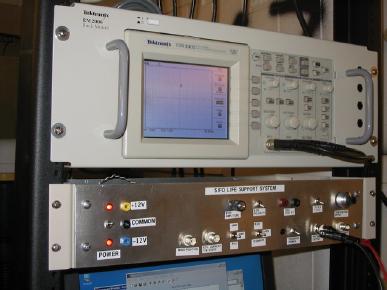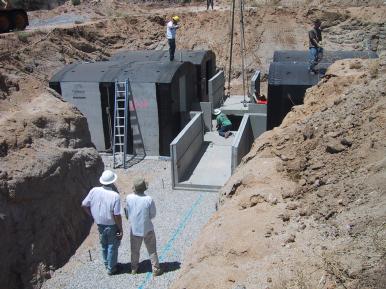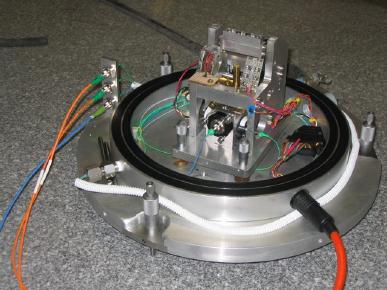
|
|
October 10, 2006
Prototype Fiber Optic Seismometer
Modern seismometers throughout the world, including those on HPWREN, rely on electronic displacement transducers to sense motions of an inertial mass, whenever the earth's surface moves. New advances in optical fiber technology are providing an alternative to this type of modern observatory grade seismometer. Scientists at Scripps Institution of Oceanography, have developed an optical fringe resolver to replace the electronic displacement transducers found in current seismometers. The optical fringe resolver uses a 633 nm polarization stabilized laser and a Michelson interferometer to detect minute movements of the earth's surface. The use of fiber optics has many benefits including immunity to electronic noise, the elimination of heat sources (a significant problem in modern seismometry) and the elimination of electrical connections between the seismometer and outside world (an important consideration in environments with lightning). The current prototype SIFO (Seismometer Incorporating Fiber Optics) is running in an underground seismic vault at the Piñon Flats Observatory in Anza, California. The seismometer relies on the HPWREN for data transfer and operation.
Jose Otero
|



